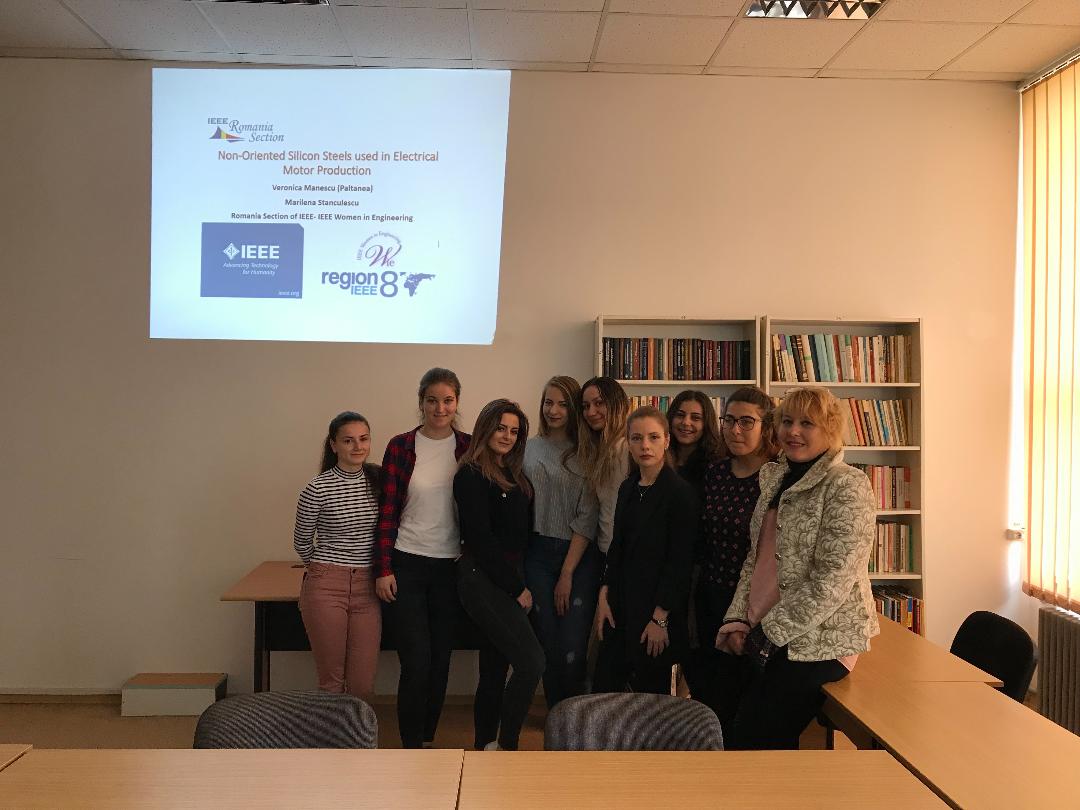Non-Oriented Silicon Steels used in Electrical Motor Production
Non-Oriented Silicon Steels used in Electrical Motor Production

The WIE IEEE Romania members’ group has actively participated at this Technical Activity, entitled “Non-Oriented Silicon Steels used in Electrical Motor Production", through its representants Assoc. Prof. Veronica Paltanea and Lecturer Marilena Stanculescu, which have spoken with students. Important worldwide guiding rules have been established, regarding the reduction of electric power consumption and CO2 emissions. The electrical machines should be more efficient, because their energy consumption accounts for 70 % of industry energy usage. Also, their carbon footprint is high, and thus it has to be reduced, by choosing high-performance electrical machines. In order to comply with IEC 60034-30-1, the producers should increase the copper mass in the stator, use high quality thinner non-oriented electrical steels, optimize the air-gaps, and improve also the cooling systems. The IE3 motors have lower copper losses, higher inductances and increased starting currents. Comparing an IE3 motor with an IE2 machine it can be concluded that the starting current is 5% higher and the inrush value is 21% bigger. The motor-protective circuit breakers, contactors, and overload relays have thus to be designed in a proper manner. Assoc. Prof. Veronica Paltanea have presented the main properties of M400-50A and M400-65A alloys, used in the IE3 electrical machine magnetic cores’ manufacture and M300-35A and NO20 high quality steel grades for IE4 motors. The samples were characterized with a laboratory single sheet tester, which consists of a double C laminated yoke and two concentric solenoids of 150 mm magnetic path length. One of them has 173 turns and it is used to generate the magnetic field; the other one is placed near the tested sample, has 101 turns and acts as a pickup coil for the secondary voltage. Energy losses and magnetic permeability were determined, by controlling the sinusoidal waveform of the secondary voltage according to the IEC 60404-3 standard in the frequency range 3 Hz – 400 Hz at peak magnetic polarization Jp = 1 T, using a 12 bit 500 MHz HDO4054 LeCroy oscilloscope, for the acquisition of the signals. Lecturer Marilena Stanculescu has explained the loss separation concept and presented the experimental results with supplementary explanation regarding the chemical composition of the electrical steel and metallurgical processes. The WIE group through its representanst Assoc. Prof. Veronica Paltanea and Lecturer Marilena Stanculescu have decided to continue with another technical and administrative activities, because the students are very interested in new trends in electrical machines.
Date and Time
Location
Hosts
Registration
-
 Add Event to Calendar
Add Event to Calendar
- University Politehnica of Bucharest
- 313 Splaiul Independentei, District 6, Bucharest, Romania
- Bucharest, Municipiul Bucuresti
- Romania RO-060042
- Building: Electrical Engineering Faculty
- Room Number: EB 210
Speakers
Assoc. Prof. Veronica Paltanea of WE80061
Non-Oriented Silicon Steels used in Electrical Motor Production
Email:
Lecturer Marilena Stanculescu of WE80061
Non-Oriented Silicon Steels used in Electrical Motor Production
Email:
University Politehnica of Bucharest

